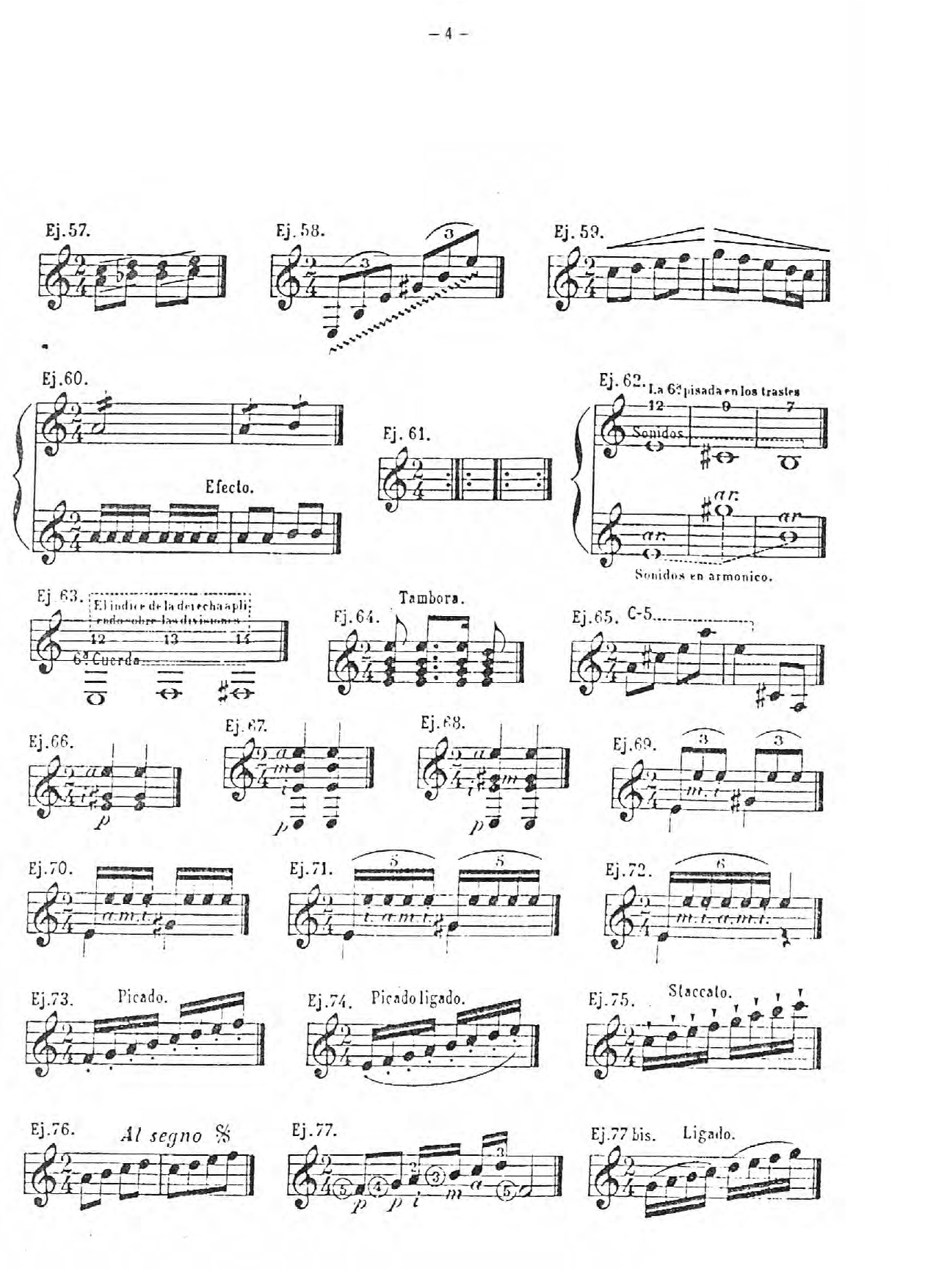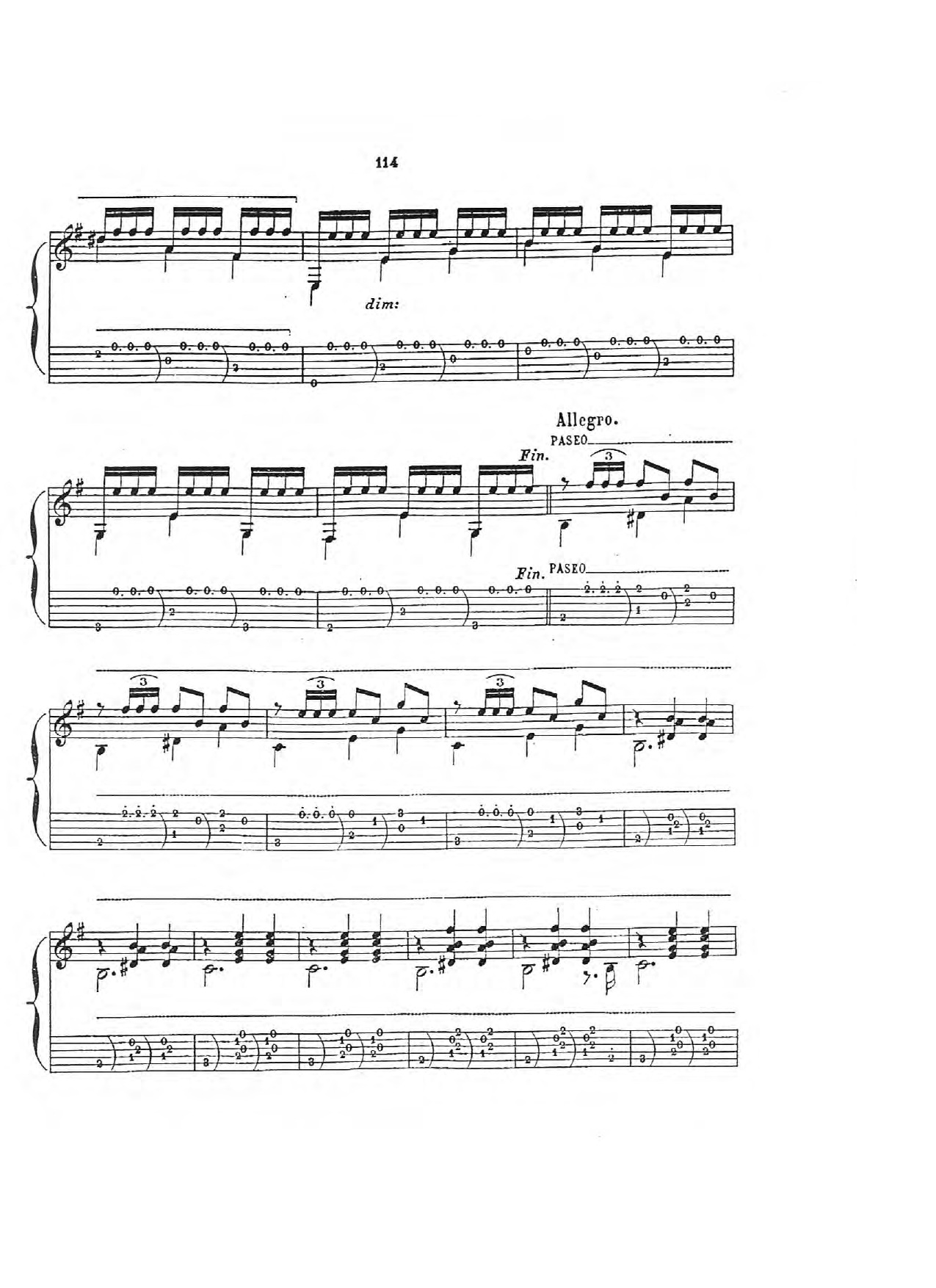|
dformell -> The Tremolo Technique: A Historical Reference (Sep. 30 2012 16:49:57)
|
It's been said throughout the years that the 5 note tremolo is a "flamenco tremolo" and the 4 note tremolo a "classical tremolo". While it's true that today most flamenco players do in fact use the 5 note tremolo and classical players the 4 note, this was not always the case. In Juan Serrano's book, Falsetas De Mi Padre, Juan's father, Antonio El Del Lunar, uses the 4 note tremolo only. The great Spanish guitarist Vicente Gomez played the 4 note tremolo in his flamenco arrangements. Probably the best source of reference - for the historical evolution of the tremolo technique - is Rafael Marin's flamenco method from 1902. Below is a copy of a page, with right hand exercises, from Mr. Marin's monumental work. Observe exercises 69 - 72, it seems that 110 years ago the tremolo technique was rather well developed indeed.
It should also be noted that Rafael Marin played both flamenco and classical. And, while we are on the subject, Mr. Marin's guitar, though looking like a "flamenco guitar" with it's friction pegs, had a rosewood body. A "flamenca negra"?

Images are resized automatically to a maximum width of 800px
|
|
|
|


